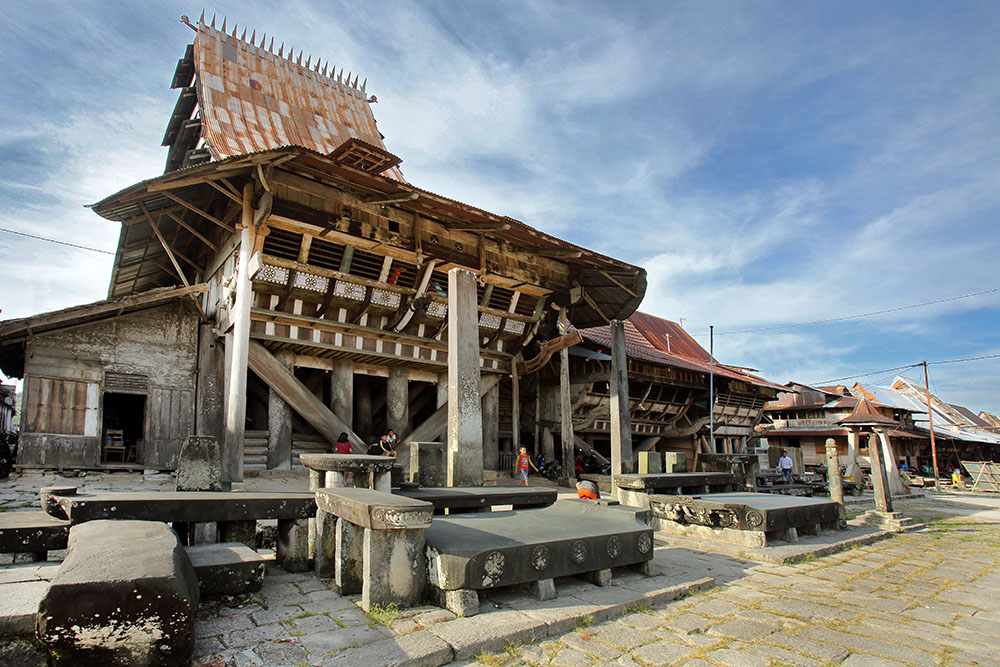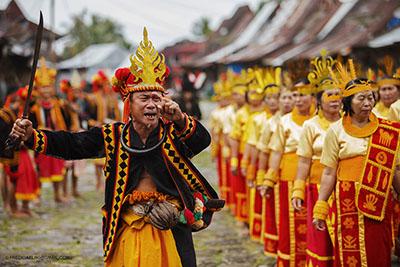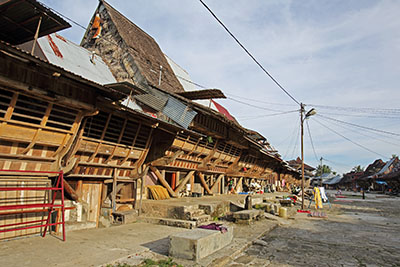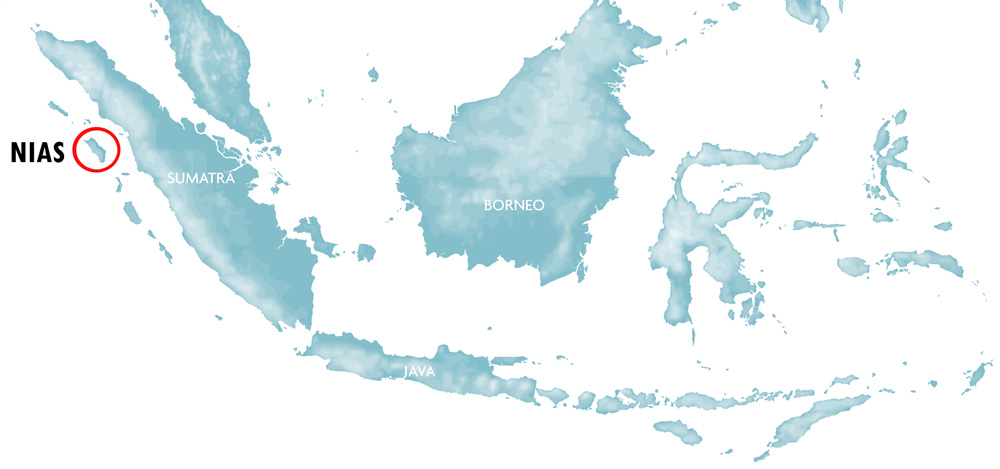
Description: Bawömataluo is the largest and best preserved traditional villages on Nias Island. It is sometimes referred to as the Kings Village. Rather than a king, there was a very powerful tribal chieftain who ruled the surrounding villages from here.
Many researchers agree that Nias traditional houses (Omo Hada) are some of the finest examples of vernacular architecture in Asia. They are built without the use of nails and are able to withstand powerful earthquakes. There are over 100 traditional houses in Bawömataluo village. There are variations in architecture across the island; South Nias houses are rectangular and built next to each other. In some villages there are large Omo Zebua houses, which is where the chief used to live. The Omo Zebua house is Bawömataluo is in particularly good shape and is open to visitors.
Megaliths of various sizes and styles are a unique aspect of Nias culture and there are many interesting examples in Bawömataluo village. There is also a ‘jumping stone’ in front of the chief’s house. Stone jumping (Fahombo) is a cultural practise unique to Nias. Originally the stone jumping ceremony was part of an initiation rite for young men to be accepted as adults and warriors. The jump is done barefoot and a lot of practice is required before a jump is attempted. The most famous jumping stone on Nias can be seen in Bawömataluo village, where a team off young men regularly perform the stone jump for visitors.
Apart from cultural artefacts and traditional architecture a visit to Bawömataluo village is a great opportunity to observe daily life in one of the remaining traditional villages in Indonesia. Bawömataluo has been nominated for world heritage listing.
Just a few hundred meters down the hill is Orahili Village which is also well worth a visit. A couple of kilometers past Bawömataluo at the end of a narrow road lies Lahusa Fau village. While not as large as the other two it is also interesting.
Getting there: The turn off to Bawömataluo village is halfway between Sorake and Teluk Dalam and the drive takes ca. 20 minutes. Just follow the main road and turn north at a large intersection (Simpang Lagundri). Continue on this road for one kilometre before turning right and follow the road up the up the hill. The entrance to Bawömataluo is a set of very steep stairs opposite a church.
Indonesian name: Desa Bawömataluo, Kecamatan Fanayama, Kabupaten Nias Selatan
Social Share
BAWÖMATALUO LOCATION


Stone jumping. Photo by Ferry Latief.

War dance. Photo by Fredi Daeli.

Traditional houses on a paved street.
VISIT NIAS ISLAND
 Sharing the wonders of Nias Island with the World! VISIT NIAS ISLAND is a campaign to promote Nias as a tourism destination
CONTACT US
Sharing the wonders of Nias Island with the World! VISIT NIAS ISLAND is a campaign to promote Nias as a tourism destination
CONTACT US

